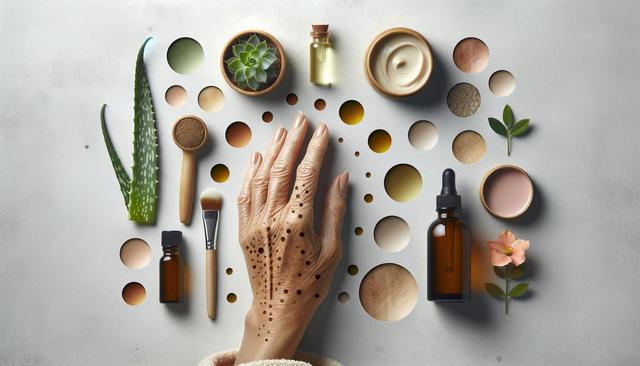Understanding What Causes Age Spots
Age spots, also referred to as liver spots or sun spots, are flat, brown, or black patches that appear on the skin due to prolonged sun exposure or natural aging. These spots are more common in individuals over 40 but can appear earlier depending on skin type and lifestyle. Melanin, the pigment responsible for skin color, increases in response to UV exposure, leading to these concentrated patches over time. While age spots are generally harmless, many people seek age spot treatment to improve the appearance and even tone of their skin.
Some key factors that contribute to age spot development include:
- Frequent and prolonged sun exposure without protection
- Use of tanning beds
- Genetic predisposition
- Aging, which slows down skin cell turnover
Understanding the root causes of age spots can help inform the most effective treatment options, whether you’re considering professional treatment or looking for an age spot removal treatment at home.
Topical Creams and Age Spot Removers
One of the most accessible and widely used methods for treating age spots is through topical products. An age spot cream typically contains ingredients designed to lighten pigmentation and encourage skin cell turnover. Over-the-counter options often include compounds like hydroquinone, retinol, and vitamin C.
Popular ingredients in age spot removers include:
- Niacinamide – Known for its soothing and brightening effects
- Glycolic acid – Helps exfoliate the top layer of skin
- Tranexamic acid – Reduces discoloration effectively over time
When selecting an age spot remover, it’s important to choose products that suit your skin type and are backed by dermatological support. Consistency is key, as results often take several weeks to become noticeable. Using sunscreen alongside these treatments is essential to prevent further pigmentation.
Dermatological Procedures for More Intensive Treatment
For those looking for faster or more dramatic results, dermatological procedures offer high-impact solutions. These are typically conducted in a clinical setting and include treatments such as laser therapy, chemical peels, and cryotherapy.
Common in-office age spot treatments include:
- Laser therapy: Targets melanin and breaks down pigment with minimal damage to surrounding skin
- Chemical peels: Use acids to exfoliate and remove the surface skin layers
- Cryotherapy: Freezes age spots using liquid nitrogen to cause them to peel off over time
While these methods are effective, they may require multiple sessions and can be more costly than at-home treatments. Consultation with a dermatologist is recommended to determine the most suitable approach based on skin type and the severity of pigmentation.
Age Spot Removal Treatment at Home
Many people prefer the convenience and affordability of treating age spots at home. A wide range of at-home solutions exists, including both commercial products and natural remedies. An age spot removal treatment at home can be just as effective for mild cases when used consistently and properly.
Effective at-home approaches include:
- Using age spot creams with active brightening ingredients
- Exfoliating regularly to remove dead skin cells
- Applying sunscreen daily to prevent worsening or new spots
It’s also important to maintain a gentle skincare routine to avoid irritation. While some may be tempted to try overly aggressive exfoliation or unproven remedies, sticking to dermatologist-recommended products and methods ensures better outcomes with minimal risk.
Home Remedies for Age Spots
For those who prefer natural solutions, several home remedies for age spots have been used traditionally to help lighten pigmentation. Although these methods may not produce immediate results, they can be part of a holistic skincare routine aimed at improving skin appearance over time.
Examples of natural remedies include:
- Lemon juice: Contains citric acid that may help lighten dark spots
- Aloe vera: Known for its healing and soothing properties
- Apple cider vinegar: Acetic acid may help lighten pigmentation when used cautiously
When using home remedies, it’s essential to apply a patch test first and monitor your skin’s response. These approaches can be combined with other age spot treatments for enhanced results, particularly when integrated into a broader skincare regimen that includes sun protection and hydration.
Conclusion: Choosing the Right Age Spot Treatment for You
While age spots are a natural part of aging and sun exposure, there are multiple ways to reduce their appearance—ranging from dermatologist-prescribed treatments to age spot cream and age spot removal treatment at home. The right solution depends on your skin type, the severity of the spots, and your personal preferences.
Whether you opt for a professional procedure or prefer exploring home remedies for age spots, consistency and sun protection remain key elements of any effective treatment plan. By understanding the available options and tailoring them to your needs, you can take meaningful steps toward clearer, more even-toned skin.




Leave a Reply